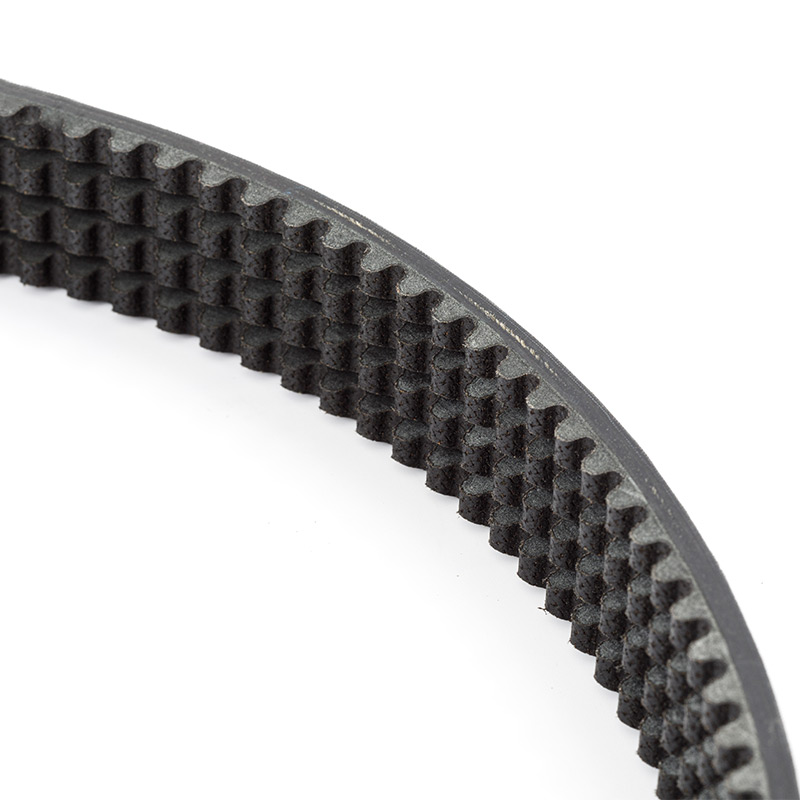Summary:Industrial Rubber V-Belts play a significant role in enhancing energy efficiency in industrial applications through several mechanisms:Reduced Friction: Industrial Rubber V-Belts are meticulously engineered to address frictional challenges inherent i......
Industrial Rubber V-Belts play a significant role in enhancing energy efficiency in industrial applications through several mechanisms:
Reduced Friction: Industrial Rubber V-Belts are meticulously engineered to address frictional challenges inherent in power transmission systems. The rubber compounds utilized undergo rigorous testing to ensure optimal frictional properties, striking a balance between grip and smooth engagement with pulleys. The profile design of V-Belts is tailored to maximize contact area, minimizing sliding friction while maintaining efficient power transfer. This attention to detail in material selection and design translates into tangible energy savings by curbing losses attributed to friction, thus bolstering the overall efficiency of industrial operations.
Optimized Power Transmission: The efficiency of power transmission systems hinges on the seamless interaction between Industrial Rubber V-Belts and pulleys. Each component undergoes stringent quality control measures to guarantee precise dimensions and tolerances, ensuring a snug fit and minimal energy dissipation. By adhering closely to specified tension levels, V-Belts maximize traction without compromising flexibility, thereby mitigating slippage and associated energy losses. This meticulous approach to power transmission optimization underscores the pivotal role of Industrial Rubber V-Belts in driving energy efficiency initiatives across industrial sectors.
Flexible Design: Unlike rigid transmission systems, Industrial Rubber V-Belts offer unparalleled flexibility, enabling them to adapt seamlessly to varying pulley configurations and load conditions. This inherent flexibility minimizes stress concentrations at critical points, safeguarding against premature wear and energy-sapping mechanical losses. The ability of V-Belts to accommodate minor misalignments and pulley deflections ensures uninterrupted operation, enhancing energy efficiency by eliminating inefficiencies stemming from mechanical constraints.
Dampening Vibrations: Vibrations pose a significant threat to energy efficiency and equipment longevity in industrial settings. Industrial Rubber V-Belts are engineered with inherent damping capabilities, acting as a buffer against vibrational forces that would otherwise dissipate energy as heat. By absorbing and dissipating vibrations, V-Belts safeguard against premature wear and tear, thus averting potential energy losses associated with frictional heating and mechanical degradation. This proactive approach to vibration management not only enhances energy efficiency but also extends the service life of critical machinery components.
Enhanced Control: Industrial Rubber V-Belts empower operators with precise control over speed and torque transmission, laying the foundation for optimized energy utilization. Leveraging advanced variable speed drive systems and pulley configurations, operators can tailor equipment performance to match dynamic load demands, thereby curbing energy wastage. Sophisticated belt tensioning mechanisms and real-time monitoring tools provide actionable insights, enabling operators to fine-tune belt tension levels and preemptively address performance deviations. This granular control fosters a culture of continuous improvement, driving sustained gains in energy efficiency across industrial operations.
Maintenance and Reliability: Sustaining peak energy efficiency necessitates a proactive approach to maintenance and reliability management. Industrial Rubber V-Belts thrive under regular maintenance regimens, encompassing comprehensive inspections, lubrication schedules, and proactive tension adjustments. By preemptively identifying and rectifying issues such as belt wear and misalignment, operators safeguard against energy losses stemming from compromised performance. Adhering to prescribed replacement intervals for worn or damaged belts prevents costly downtime events, ensuring uninterrupted operation and sustained energy efficiency gains over the long term. This commitment to proactive maintenance underscores the pivotal role of Industrial Rubber V-Belts in driving operational excellence and energy efficiency in industrial environments.
Bended V Belt
